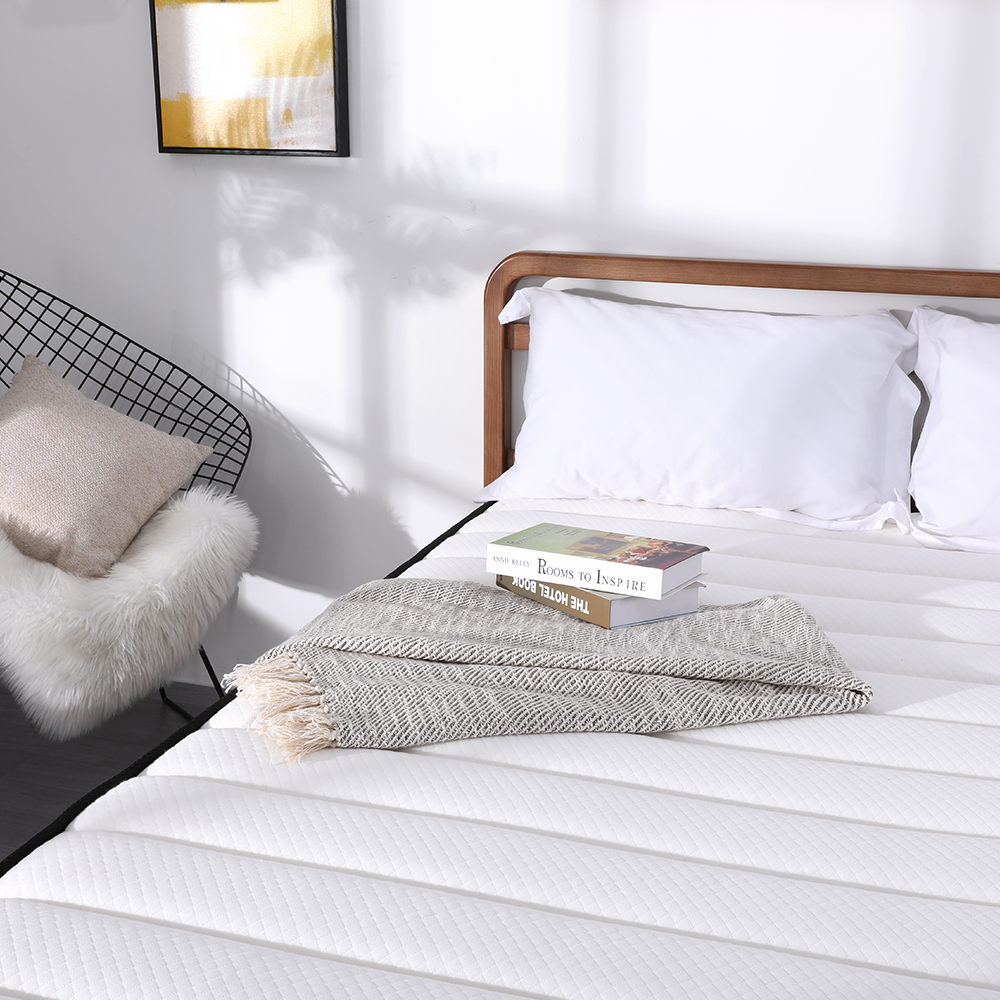What is a Latex Mattress? – A Comprehensive Guide

Latex, as you’re probably aware, *wink, a wink is a material that is very versatile in the bedroom. For today’s article, we’re looking at a slightly more relaxing way in which latex is used in the bedroom.
What is a latex mattress?
- Different forms of latex
- nature latex
- synthetic latex
- Blended latex
- Latex foam
- memory foam VS latex
You see, latex mattresses are proving to be hugely popular as of late, even though the general public generally doesn’t all too much about latex mattresses in general.
When it comes to mattresses, typically it is memory foam, or hybrid mattresses, that rule the roost. It turns out, though, that latex could potentially look set to claim its rightful place at the top of the sleep-inducing world. If sleep is something which is eluding you, or if you find yourself constantly suffering from aches and pains, it might be time to invest in a new latex mattress. Here’s a better look at what they are, and how they stack up against the competition.
What is a latex mattress?
Latex is a milky white fluid that is extracted from several plants in the wild. It is therefore completely natural. Now, surely a mattress made of fluid wouldn’t work. After all, this isn’t the 70s anymore, and waterbeds are unheard of these days, and for good reason.
However, latex isn’t water. When this milky white fluid is exposed to oxygen, contact with the air causes it to molecularly change its structure. It morphs from a liquid, into a solid. When making mattresses, latex is found in the form of the sap from the rubber tree. Latex is therefore bouncy and rubbery.
When you place your palm firmly onto the surface of a memory foam mattress, you will leave an imprint of your palm on the mattresses’ surface, and you’ll find that the mattress takes a long time to resume its original form. If you did the same to a mattress made from latex however, the mattress would quickly spring back. Latex also offers slightly more bounce.
Different forms of latex
There are a few options when it comes to latex mattresses because there are different variations of latex.
Natural latex – For starters, we have natural latex, which is the sap from the rubber tree, like we mentioned earlier. This is latex in its purest form. If you’re looking to keep costs low, and also to go with a natural product, natural latex is the way to go.
Synthetic latex – Another form of latex used in the mattresses making the world, is synthetic latex. In terms of its structure, synthetic latex is very similar to natural latex. It’s very difficult to tell them apart. However, it is manufactured very differently. Synthetic latex is made from petrochemicals which mimic the structure, properties, and feel of natural latex. Synthetic latex is generally cheaper than natural latex, though because it is cheaper, there may be issues regarding the quality.
Blended latex – Natural and synthetic latex is very different from one another. If you want to take advantage of both products, without the drawbacks, you could opt for a blended latex mattress. As the name suggests, blended latex is a combination of synthetic latex and natural latex.
Latex foam – Latex foam is now commonly found in several high-end mattresses, and hybrid mattresses, and for good reason. Latex foam can either be blended, natural, or synthetic forms of latex, and it is how latex is now used in mattresses.
Memory foam vs latex
With all of the hype surrounding memory foam, not to mention the many proven benefits of memory foam, one would be forgiven for questioning whether latex foam was needed. It turns out, that latex foam, and memory foam, are two very different things, and both offer sleepers their unique benefits.
For those of you that suffer from joint issues, trouble getting comfortable, stiff joints, and general aches and pains when sleeping in general, a memory foam mattress or hybrid may be better. That’s because these offer support and pressure relief.
But as not everybody has these types of issues when sleeping, a latex foam mattress could be the better option. To begin with, if you go the natural route, you’re doing your part to be green, as natural latex contains nothing artificial. Latex mattresses are also useful for people looking to keep costs low. Many latex mattresses nowadays have been designed to provide additional comfort and support to the sleeper, thanks to the material’s natural elastic properties.
How is latex different from memory foam?
The primary difference between the two mattresses is how they conform to your body’s natural shape and contours. Memory foam became popular because it was able to conform perfectly to the exact shape of each individual that slept on the mattress.
Latex mattresses are denser and bouncier, so they bounce and compress, and don’t conform to every single curve and contour of your body. Motion transfer is also very different between the two. You’ll generally find that the majority of people that fall in love with latex mattresses are those that sleep alone. This is because latex mattresses don’t offer motion isolation as memory foam does. If you’re a solo-sleeper however, you will almost certainly love the bounce and feel offered by latex foam mattresses.
I’ve introduced it here for a while. If you want to know more about latex mattresses, you can click on this article (What Is A Latex Mattress?), or you can watch this video below to learn more about latex beds.



 Japan
Japan
 United States
United States United Kingdom
United Kingdom Germany
Germany South Africa
South Africa


